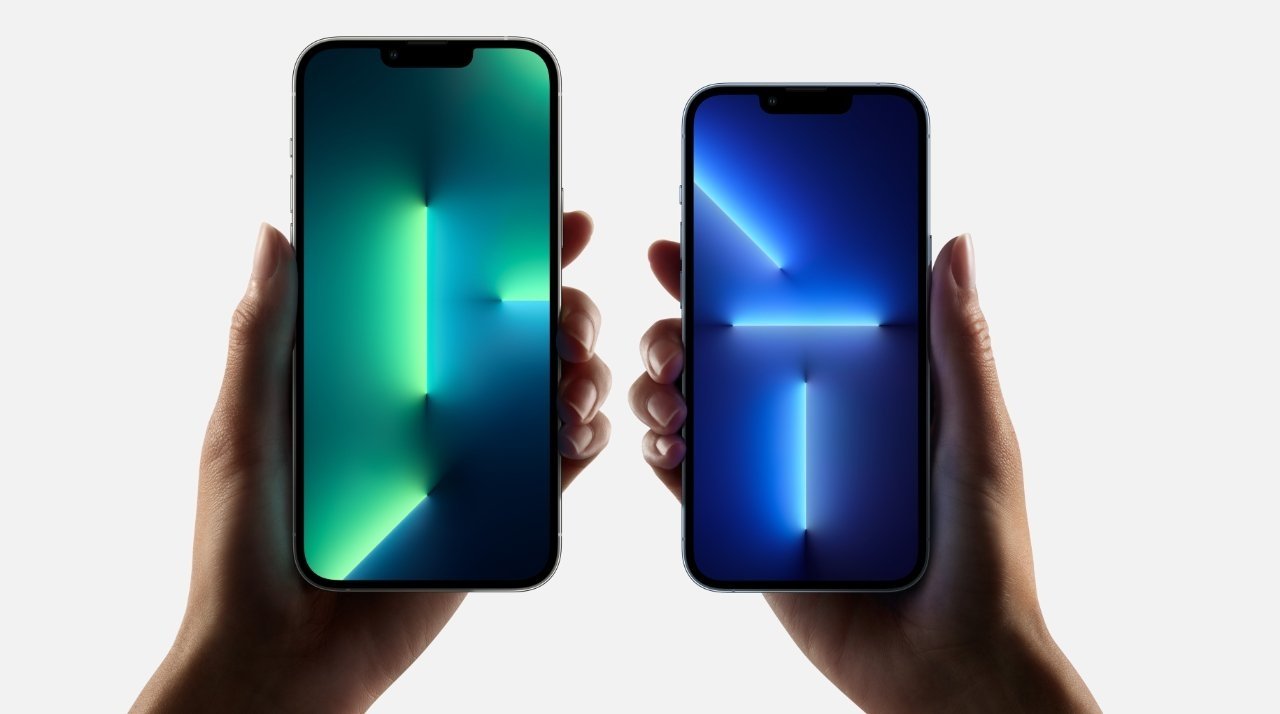Apple has placed a barrier to screen replacements on the iPhone 13 Pro by killing Face ID when a third-party display swap is performed. That's a step too far for the company.

Credit: Apple
Similar issues have come up in the past. Back in 2018, an iOS update killed the touch functionality on some iPhone 8 models if they were repaired by a third party.
Apple eventually fixed that issue, while simultaneously warning against third-party display swaps.
The iPhone 13 Pro mechanism, however, appears to be different. Here's what you should know -- and why Apple should reverse course.
Third-party screen repairs kill Face ID
Since the release of the iPhone 13 Pro, a number of repair-focused experts attempted third-party screen repairs. All of them killed Face ID.
Repair site iFixit, for example, discovered that Face ID stops working after a third-party display replacement despite the fact that the display assembly and the Face ID modules are now separate.
The site even attempted to transfer the Face ID hardware and sensors from the old display to a new one, but the repair still knocked out Face ID. This appears to be because a display is serial-locked to an iPhone.
YouTuber Phone Repair Guru made the same discovery after swapping the display on two iPhone messages.
Further work has proven that "chopping and swapping" a good iPhone 13 screen into another iPhone won't work either.
This is a change from previous behavior. Back in 2019, Apple added an on-device notification warning users after they used a third-party service for a screen repair. However, Face ID would still function, even if an independent repair shop swapped the display.
An iPhone display is not a simple component
There are perfectly valid reasons for a third party to think twice before performing an iPhone display repair. For one, the iPhone display module is not simply a piece of glass over the more sensitive components of the device. An iPhone display assembly is a complicated component itself.
The iPhone display module is actually made of several discrete components, including a sheet of tempered glass, a touchpad, backlighting components, and additional layers of sensors.
Despite the fact that screen swaps are among the most common repairs, it is not necessarily a simple procedure. Even iFixit notes that the cable linking the display module to the rest of the device is "scary thin and way too short." In other words, it's easy to mess up a screen swap.
We've said before that third parties should have access to non-security related parts, like screens, case parts, and batteries. Disabling Face ID when a third-party screen swap is performed -- which has zero impact on user security -- is arbitrary and a step too far.
Apple's repair problems
Apple's public messaging on repair is complicated. Even within Apple, reports have indicated that there's plenty of internal disagreement, debate, and uncertainty on the issue.
On the other hand, Apple has historically opposed and lobbied against right to repair legislation that would guarantee access to tools, documents, and resources for users and third-party repair shops. Its efforts have tabled and killed right to repair legislation in states like California.
Apple claims that opening up repair access to its devices would create consumer safety and security risks.
On the other hand, the company has expanded access to official parts and repair guides through its Independent Repair Provider program. The problem, according to technicians and repair shop owners, is that Apple's terms and requirements for the program border on totalitarian.
The company's environmental and sustainability stance also complicates the issue. Electronic waste is projected to become a major problem. Opening up repair access would undoubtedly help mitigate some of those waste issues. The question for Apple appears to be whether that balances out the supposed safety and security issues.
Killing Face ID in display swaps is a step too far, even for Apple
A 2018 report indicated that American consumers crack at least two smartphone screens each second. The total cost to repair those devices amounted to $3.4 billion a year. As with any financial costs, lower-income iPhone users will be the most affected.
Apple pairing its display components in software to stop third-party display repairs feels arbitrary. Unless the company has a compelling reason, it feels like a step to further restrict repair access. For a component that's as frequently broken as a screen, this becomes an even worse problem.
Warning users away from going to third-party repair services is one thing, but actively punishing users for doing so is another.
This isn't an argument to open up repair access to Apple's hardware entirely. Like any good debate, there are certainly valid points on both sides of the right to repair issue (despite the vagueness of the term). The average consumer isn't going to need schematics to perform logic board repairs. However, a screen glass replacement is a different animal.
As far as reports indicate, Apple is pairing display and Face ID components in software. It could easily reverse that behavior in an iOS update. It comes down to a question of whether it should.
There are plenty of reasons to avoid third-party or DIY screen repairs, and plenty of reasons to take those options. But, for such a commonly broken component, consumers should be able to make their own decision about it.
At the very least, Apple shouldn't arbitrarily punish users for making a non-security related repair decision about a device that they own.

